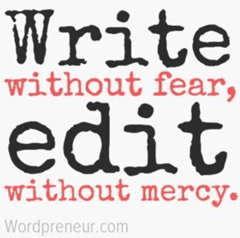Likewise, your job is to only point out errors and offer comments on correction. So when you critique, use your word processor's (Word, GoogleDocs, etc.) comment feature to add comments to the writing. Be as detailed as you can as to why what you're flagging is wrong, and how to make corrections. But your job is not to fix the errors for the writer.
Check the format

- This is fundamentally the most important part of a critique. Professors, employers, and even book publishers ask for writing to be formatted according to their instructions. Incorrect format demonstrates that the writer cannot follow directions. If the format is incorrect, no one will read the essay.
- Requirements can focus on the specific subject matter, what goes into the introduction, the use of citations, specific word choices and vocabulary to include. Review and check off each requirement.
- Length: If an essay needs to be X number of words, it must be at least X number of words. An essay that needs to be Y pages long must completely fill Y pages. Even one line or one word missing is incorrect.
- The writing must make sense. If something doesn’t make sense to you as the critiquer, then it won’t make sense to the average reader. You need to point this out to the writer. Don’t assume that the writer understands it, and that you missed something. Point it out.
- Whenever a quote or fact is offered, it must be checked. One incorrect fact makes all others suspect, and destroy a writer’s authority on the subject. Double-check all facts, especially statistics, dates, and names.
- While not a dealbreaker, readers cannot take a writer with poor grammar and punctuation seriously. They can also misrepresent the point or confuse readers.
| Format | |
| Font | Set font for entire document to Times New Roman 12 pt. |
| Title | Title must relate to essay's argument. |
| Spacing | Set line spacing to double spaced (2.0). |
| Margins | Set all margins to 1 inch. |
| Indent | Indent the first line of all paragraphs. |
| Other | Other formatting as specified by instructor |
| Required | |
| Length | Verify word count or page count (to the end of the page). |
| 1st & 2nd POV | Remove 1st & 2nd person POV pronouns as specified. |
| Support | Include appropriate quotations and paraphrases as specified. |
| Citations | Include citations of requested style for quotations and paraphrases. |
| Other | Other requirements as specified by instructor. |
| Logic | |
| Ideas | Paragraph topic sentences contain main argumentative ideas. |
| Progression | Logical progression of idea and support sentences through paragraph. |
| Organization | Logical grouping of paragraphs reflect main ideas. |
| Statistics & Dates | Verify all statistics and dates referenced. |
| Names | Double-check the spelling of all names. |
| Context | Ensure facts and quotations are not misrepresented in essay. |
| Grammar | |
| Fragments/run-ons | Eliminate sentence fragments and run-ons. |
| Clarity | Make sure sentences are clear and free of awkward constructions. |
| Passive Voice | Use active voice verbs whenever possible. |
| Spelling | Check spelling, homophones, definitions, and ensure word choice. |
| Punctuation | |
| Commas | Commas with coordinating conjunctions, in a series, dates, etc. |
| Apostrophes | Apostrophes used correctly for possession and contractions only. |
| Quotation Marks | Opening and closing marks placed next to their words. |
| Question marks | Eliminate most rhetorical questions |
| Exclamation Points | Eliminate exclamations from formal writing |
No comments:
Post a Comment